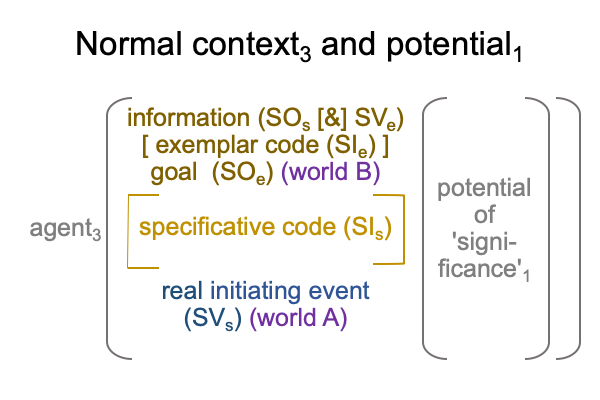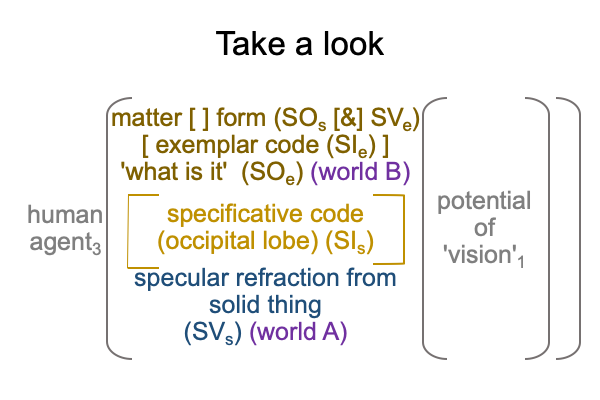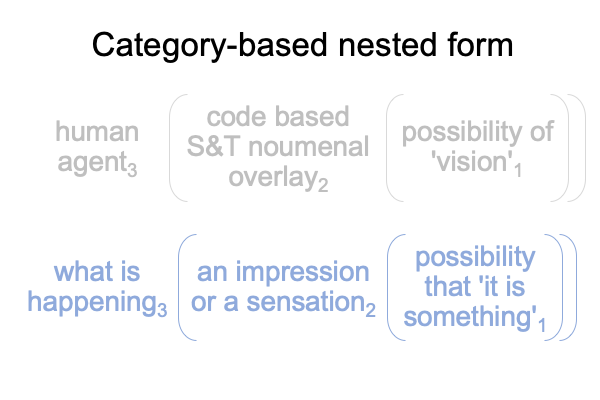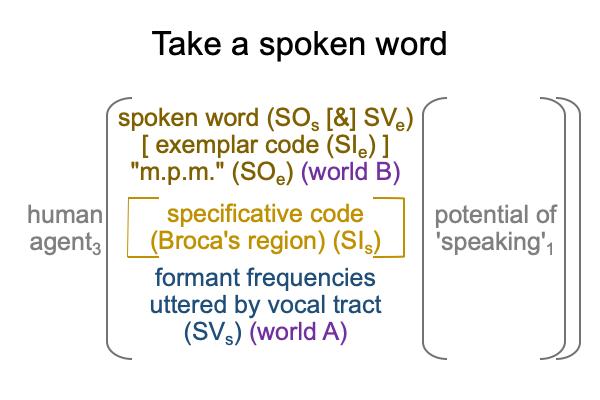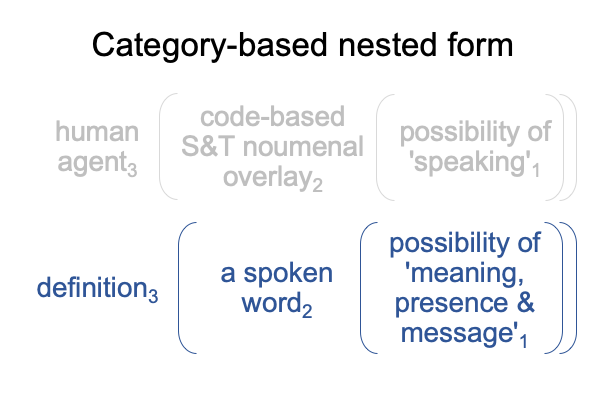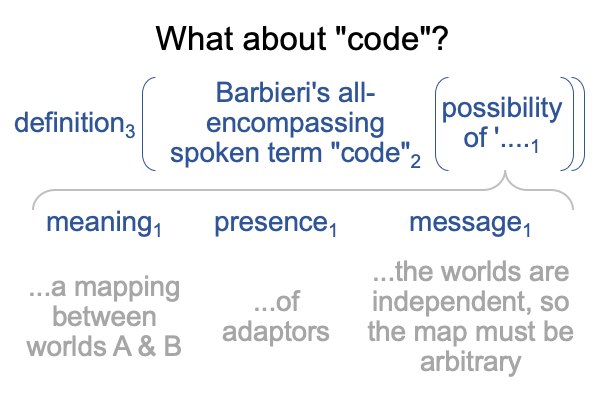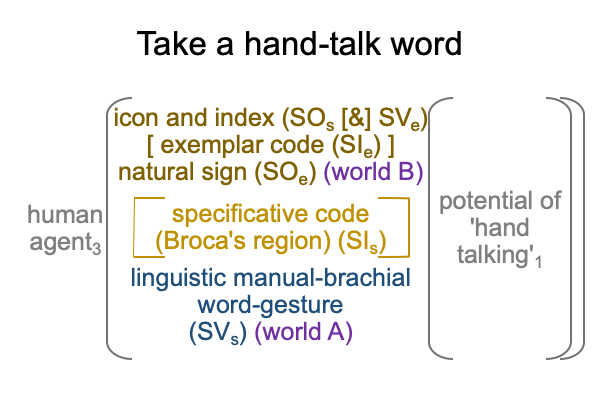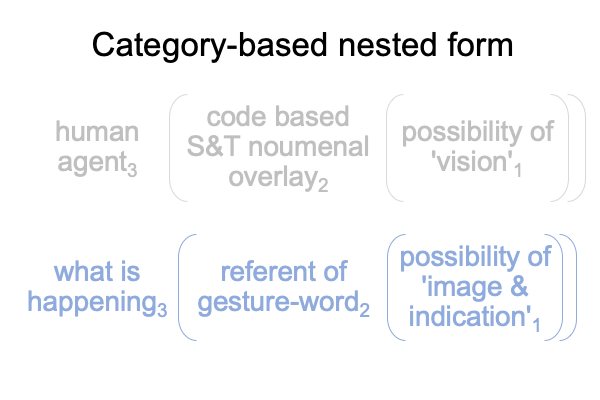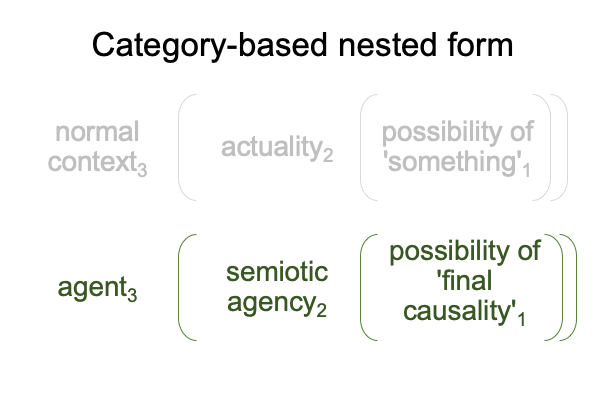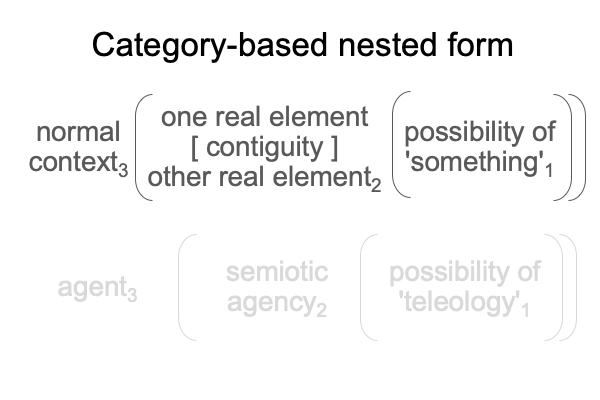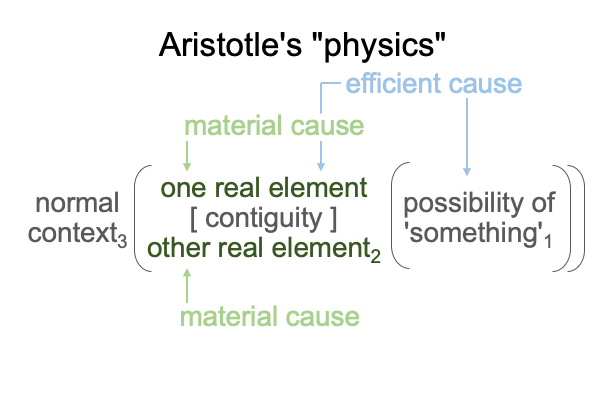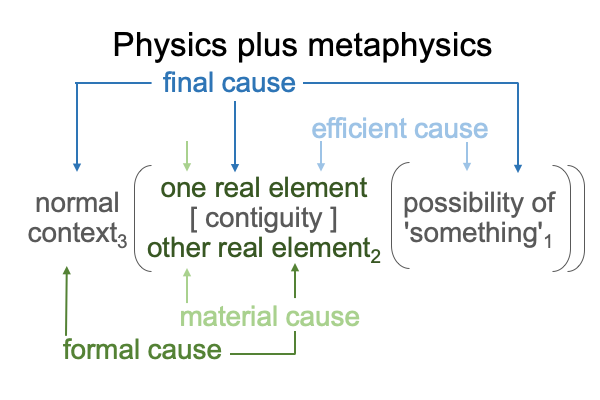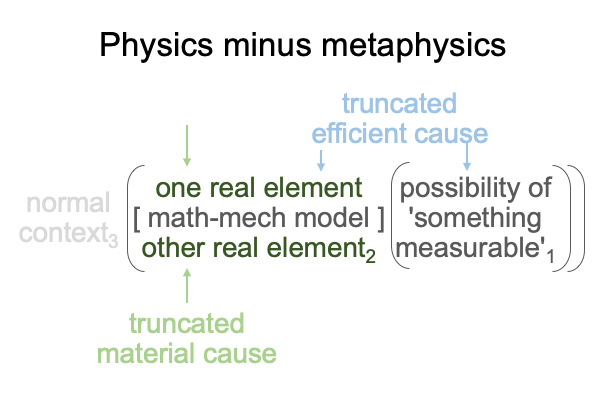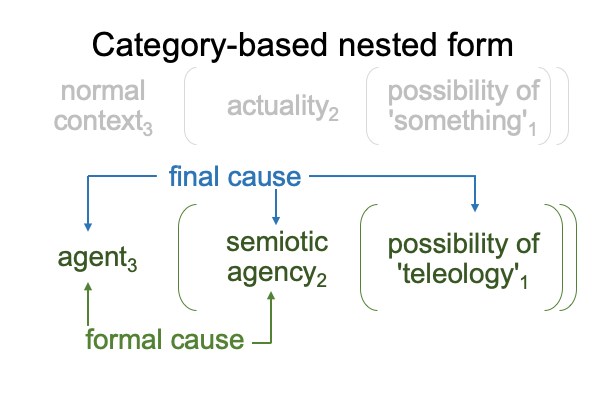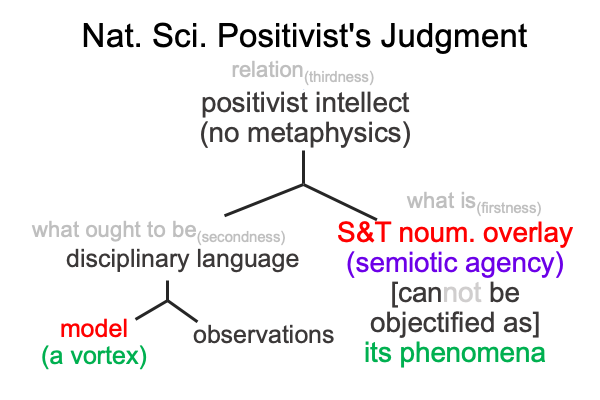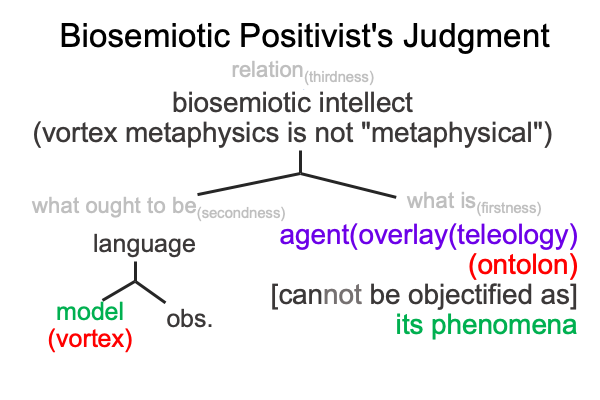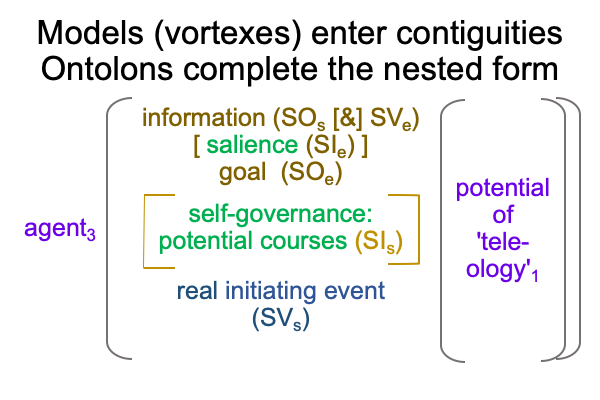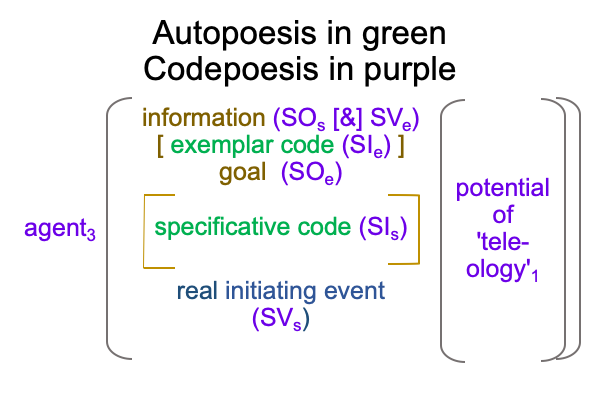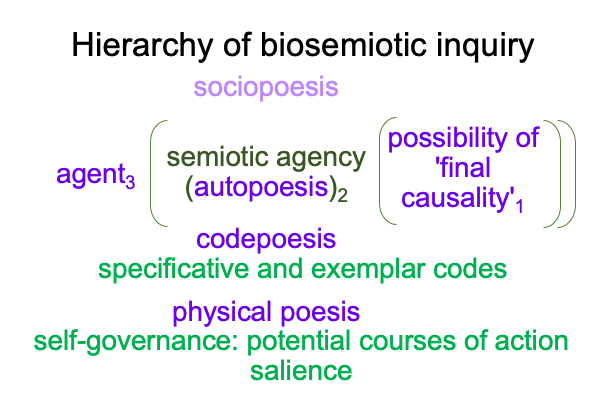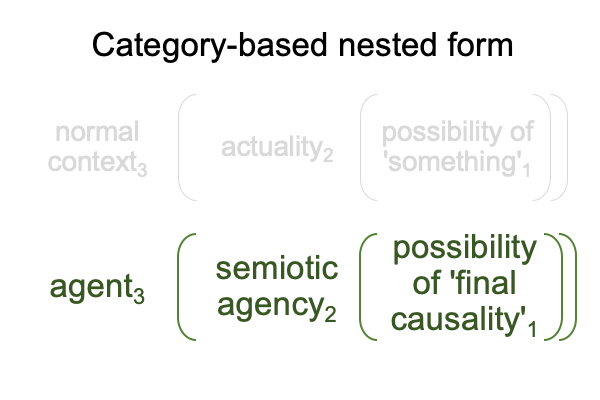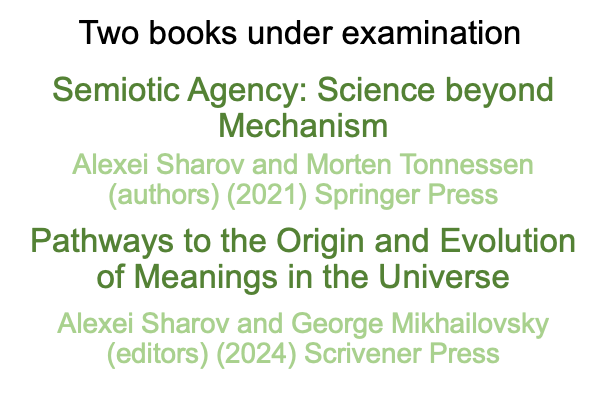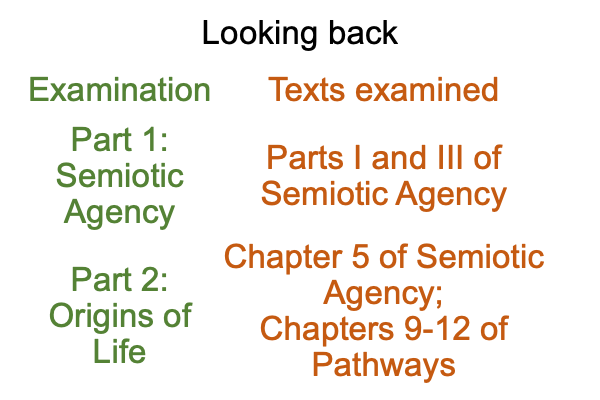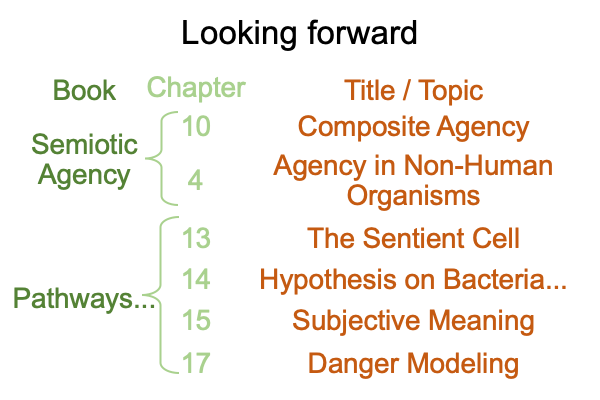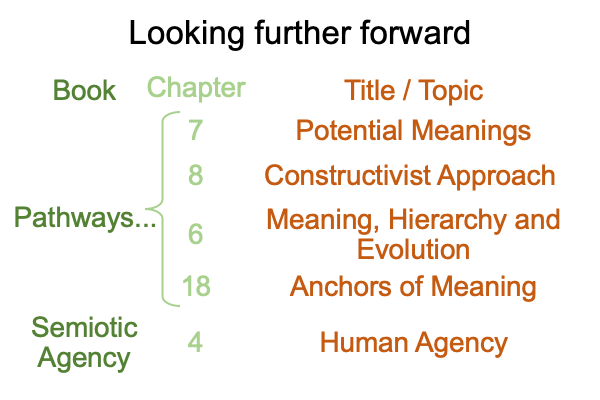Looking at Robert Prinz’s Chapter (2024) “Meaning Relies on Codes But Depends on Agents” (Part 2 of 5)
0403 Section 11.1 mentions codes and adaptors.
It makes me wonder about the solidity of the disciplinary language for codes.
In the above example of a bicycle lock, I ask, “Is the slot for the key an adaptor? I suspect that the tumblers that give way in the face of key entrance are adaptors. One particular configuration of that conformal change will no longer restrain the bolt. Is the bolt an adaptor? Yes, the curved bolt is precisely what binds my bicycle to the metal stand.
0404 World A is me with my bicycle key in my pocket.
World B is my bicycle locked to a public stand, like a steed awaiting my return.
0405 Section 11.2 notes several well-characterized organic codes in the biological literature.
The first is the genetic code. The genetic code is primary. I suppose that it is why it must be mentioned first. I suppose that the genetic code is locked with that well-sequestered polymer, DNA. I have a word for the potential of DNA. I call it the “genotype”.
The second code mentioned is the DNA repair code.
That is not encouraging.
0406 Let me take a peek at this genotype business.
In order to make amino-acid proteins (world B), DNA is first transcribed into messenger-RNA.
Now, that is a story in itself.
Like how does some transcriber say, “I think that the section of DNA that I want to transcribe is located here.”, when “here”, looks like a spool of yarn that is held together with gum?
Unintended mishaps explain why the second-mentioned code stands ready-at-hand. What a mess.
0407 So, instead of starting with DNA as world A, the author reasonably begins with m-RNA.
The code?
A nucleic acid triple (codon) located in a messenger-RNA (A) codes for a specific amino acid attached to a transfer-RNA by aminoacyl synthetase (B).
I suppose that I can say, “Codons in world A directly map amino acids in world B.”
0408 Two adaptors seem to be involved.
One, an aminoacyl synthetase attaches a specific amino-acid to a specific transfer-RNA. The t-RNA is doubly specific. On one hand, it is specific to an amino acid. On the other hand, it carries the nucleic-acid complement to the codon that maps to that amino-acid. The t-RNA complement codon hydrogen bonds to the m-RNA codon because of their complementary nucleic-acid geometries.
Two, a protein translation machine crawls along the strand of mRNA and chaperones the match between a t-RNA complementary codon and the currently exposed m-RNA codon. If pairing is good enough, then the t-RNA’s amino acid gets added onto the forming peptide (amino-acid chain).
0409 Does this two point description fit into the idea of code and S&T’s noumenal overlay?
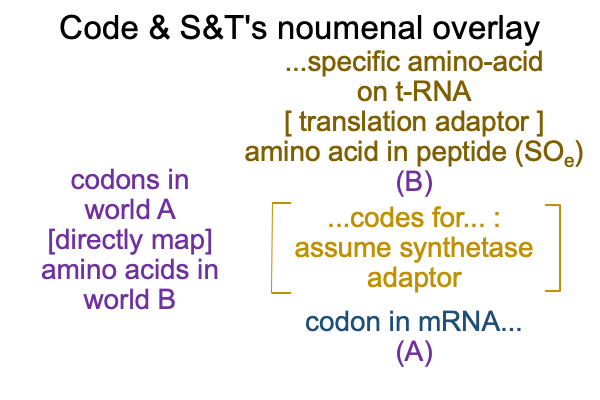
0410 The answer is yes.
And, that leads to this concern.
The S&T noumenal overlay seems like an afterthought.
All this nerve-wracking research in a genetics laboratory has come up with the two-point description stated above. The rule of thumb is this: Every sentence in a senior college-level biochemistry text corresponds to a five-year doctoral thesis. By extension, each item in the above two-point description corresponds to five or ten sentences in a biochemistry textbook.
Decades and decades of laboratory research goes into elucidating what Barbeiri calls the “genetic code”.
So what value does Barbeiri’s formalism offer?
0411 It offers a vision of the noumenon, the thing itself, that is not the same as taking this very complicated and successful model and placing it over the noumenon, as a triumphalist scientist is wont to do.
As soon as the triumphal scientist says, “The current model of the role of mRNA in peptide synthesis is the thing itself.”, then the biosemiotic connection is severed, and the research falls, like a leaf no longer connected to the tree of semiosis.
0412 The genetic code is not the only organic code mentioned in section 11.2.
Section 11.3 lists organic codes that control other organic codes.
I wonder, “How can one code gain control over another?”
I can imagine two trajectories, starting with the following routinization of a S&T noumenal overlay. Note how the two contiguities are replaced by codes corresponding to a sign-interpretant that operates on only one possibility.
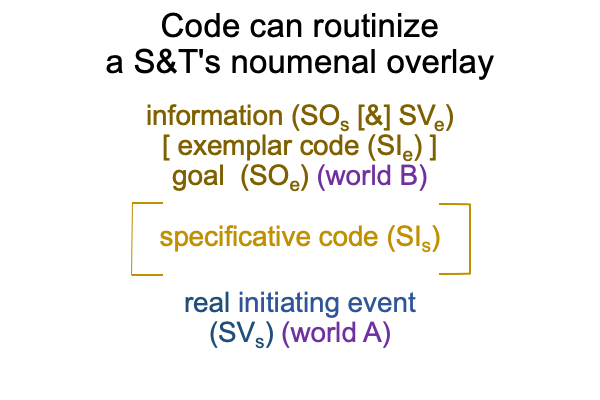
In order to put the above figure in more familiar terms, the specificative code is habit and the exemplar code is salience.
0413 How does one code gain control of this semiotic agency?
It games it.
I have already presented the example of a wood-eating insect gaming a bacteria capable of latching onto exposed cellulose.
0414 One agent incorporates another agent into its semiotic agency.
The question is, “How?”
0415 Semiotic agency2 is an actuality2. Actuality2 belongs to Peirce’s category of secondness. Secondness consists in two contiguous real elements.
Actuality2 is contextualized by a normal context3. Normal context3 belongs to Peirce’s category of thirdness. Thirdness is triadic. Thirdness brings secondness into relation with firstness.
Actuality2 is potentiated by ‘something’ in the realm of possibility1. The monadic realm of possibility1 associates to firstness.
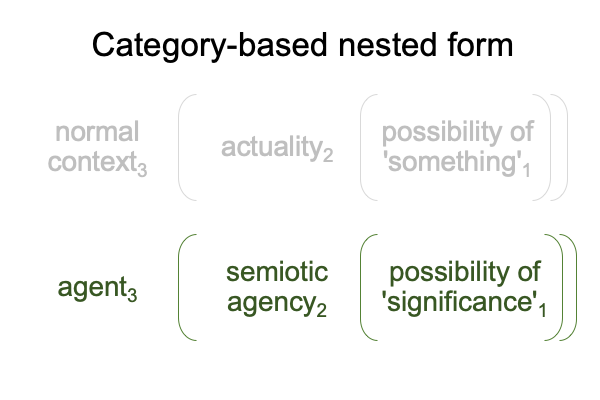
Hmmm. One semiotic agency2 can game another semiotic agency2 by changing its normal context3 and potential1.

